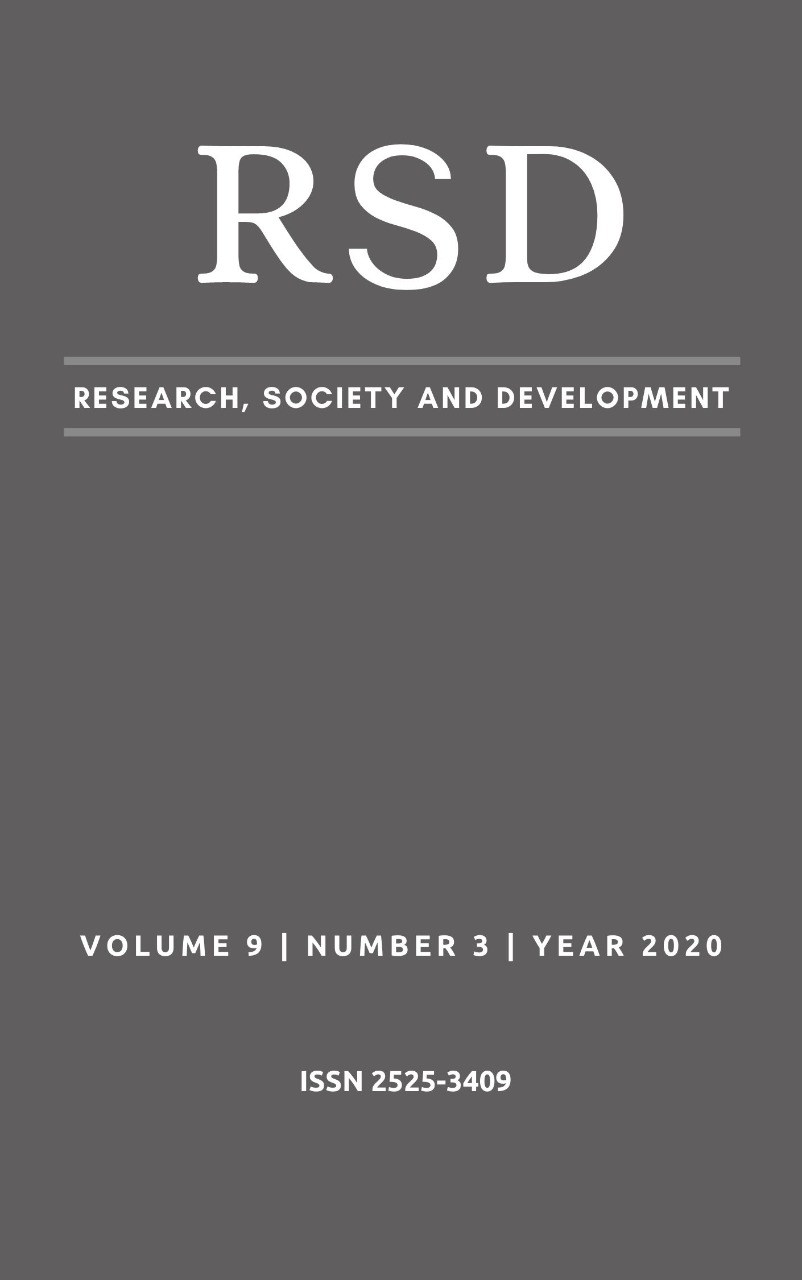Turismo no Brasil: uma análise de clusters baseada no índice de competitividade dos destinos indutores
DOI:
https://doi.org/10.33448/rsd-v9i3.2729Palavras-chave:
Turismo; Destinos Indutores; Clusters; Competitividade.Resumo
A utilização de indicadores de competitividade na avaliação da performance dos destinos turísticos tem possibilitado a identificação de fragilidades e potencialidades que precisam ser abordadas pelas políticas públicas de fomento ao setor. Contudo, em se tratando de Brasil e se considerando que as especificidades regionais existentes engendram dinâmicas próprias para o desenvolvimento da atividade, objetivou-se, com este artigo, analisar os padrões de performances dos referidos indicadores visando subsidiar conjuntos de políticas de fomento específicas para cada região. Metodologicamente, trata-se de um estudo exploratório, de base quantitativa que recorreu à utilização de métodos estatísticos hierárquicos e não hierárquicos, bem como da análise da variância para criação de aglomerados ou clusters de municípios. Isto foi feito com base nas treze dimensões avaliadas pelo Índice de Competitividade do Turismo Nacional (ICTN), idealizado pelo Ministério do Turismo, Sebrae e Fundação Getúlio Vargas. Como resultados, identificou-se três grupos de municípios com níveis distintos de competitividade, fortemente baseados em parâmetros associados ao nível de dinamismo de suas economias, tendo em comum uma grande deficiência quanto ao nível de Cooperação Regional. Complementarmente, percebeu-se a existência de necessidades comuns a todos os destinos e que precisam ser objeto de atenção especial, relacionadas justamente com a disponibilidade de análises estatísticas e estudos sobre o setor.
Referências
Bain, J.S. (1968). Industrial Organization. New York: John Wiley & Sons
Buhalis, D. (2000) Marketing the competitive destination of the future. Tourism Management, 21(1), 97-116. doi: 10.1016/S0261-77(99)00095-3
Brasil, Ministério do Turismo. (2015). Índice de Competitividade do Turismo Nacional: relatório Brasil 2015. Brasília, DF: 1-84. Recuperado de http://www.turismo.gov.br/sites/default/turismo/o_ministerio/publicacoes/downloads_publicacoes/Relatorio_Brasil_2015_WEB.pdf
Crouch, G.I.; & Ritchie, J.R.B. (1999). Tourism, Competitiveness, and Societal Prosperity. Journal of Business Research, 44 (3), 137-152. doi: 10.1016/S0148-2963(97)00196-3
Dwyer, L. & Kim, C. (2003). Destination competitiveness: determinants and indicators. Current Issues in Tourism, 6 (5), 369-414. doi: 10.1080/13683500308667962
Favero, L. P., Belfiore, P., Silva, F. L., Chan, B. L. (2009). Análise de Dados: modelagem multivariada para tomada de decisões. Rio de Janeiro: Elsevier
Flores, L.C. da S. & Mendes, J. da C. (2014). Perspectivas do destino turístico: repensando o sentido do conceito. Revista Brasileira de Pesquisa em Turismo. 8(2), 222-237. doi: 10.7784/rbtur.v8i2.717
Gooroochurn, N. & Sugiyarto, N. (2005). Competitiveness Indicators in the Travel and Tourism Industry. Tourism Economics. 11(1), 25-43. doi: 10.5367/0000000053297130
Haguenauer, L. (2012). Competitividade: conceitos e medidas. Uma resenha da bibliografia recente com ênfase no caso brasileiro. Revista de Economia Contemporânea, 16(1). 5-31. doi: 10.1590/S1415-98482012000100008
Johnson, R. A. & Wichern, D. W. (2007). Applied multivariate statistical analysis. New Jersey: Pearson Education
Kupfer, D. (1992). Padrões de concorrência e competitividade. Encontro Nacional da Associação Nacional dos Centros de Pós-graduação em Economia, Campos do Jordão, SP, Brasil, 20. Recuperado de
Lastres, H. & Cassiolato, J. (1995). Contribuição do PADCT para a melhoria das condições de competitividade da indústria brasileira — versão preliminar para discussão. Recuperado de https://www.faneesp.edu.br/site/documentos/contribuicao_PADCT.pdf
Lopes, T. H. C. R., Spinola, C. A., Souza, L. N., Reis, R. B. (2019). Determinantes do crescimento do emprego no setor de turismo no Nordeste: 2006-2015. Revista Iberoamericana de Turismo, 9 (1), 200-218. Recuperado de:
http://www.seer.ufal.br/index.php/ritur/article/view/7048
Maroco, J. (2007). Análise estatística com utilização do SPSS. Lisboa: Edições Sílabo Mason, E.S. (1939). Price and Production Policies of Large Scale Enterprises. The American Economic Review, 29(1), 61-74. Recuperado de https://www.jstor.org/stable/1806955?casa_token=2dwp03sloCMAAAAA:HahsIfLiZlqXka9
BnHizlyD1rHVfuNoyjHzPfOSReUHIhqJ-oelrhjwnxjJETB-
xtbDR5AYayKVTCZmqBSehJXzTIT_Fz96boeCjrXyawnG88oaAlz0SA&seq=1#metadata_info_tab_contents
Organization for Economic Cooperation and Development. (2003). A Study on the factors of regional competitiveness: A draft final report for the European Commission Directorate General regional policy. University of Cambridge. Recuperado de http://citeseerx.ist.psu.edu/viewdoc/download?doi=10.1.1.400.2517&rep=rep1&type=pdf
Ribeiro, L. C. S., Lopes, T. H. C. R., Montenegro, R. L. G., Andrade, J. R. L. (2017) Employment dynamics in the Brazilian tourism sector (2006-2015). Tourism Economics, 24(4), 418-433. doi: 10.1177/1354816617736409
World Economic Forum. (2017). The Travel & Tourism Competitiveness Report 2017. Genebra: WEF. Recuperado de https://www.weforum.org/reports/the-travel-tourism-competitiveness-report-2017
World Tourism Organization. (2009). International Tourism on Track for a Rebound after an Exceptionally Challenging 2009. Madrid: UNWTO. Recuperado de http://www.unwto.org/media/news/
Downloads
Publicado
Como Citar
Edição
Seção
Licença
Autores que publicam nesta revista concordam com os seguintes termos:
1) Autores mantém os direitos autorais e concedem à revista o direito de primeira publicação, com o trabalho simultaneamente licenciado sob a Licença Creative Commons Attribution que permite o compartilhamento do trabalho com reconhecimento da autoria e publicação inicial nesta revista.
2) Autores têm autorização para assumir contratos adicionais separadamente, para distribuição não-exclusiva da versão do trabalho publicada nesta revista (ex.: publicar em repositório institucional ou como capítulo de livro), com reconhecimento de autoria e publicação inicial nesta revista.
3) Autores têm permissão e são estimulados a publicar e distribuir seu trabalho online (ex.: em repositórios institucionais ou na sua página pessoal) a qualquer ponto antes ou durante o processo editorial, já que isso pode gerar alterações produtivas, bem como aumentar o impacto e a citação do trabalho publicado.

